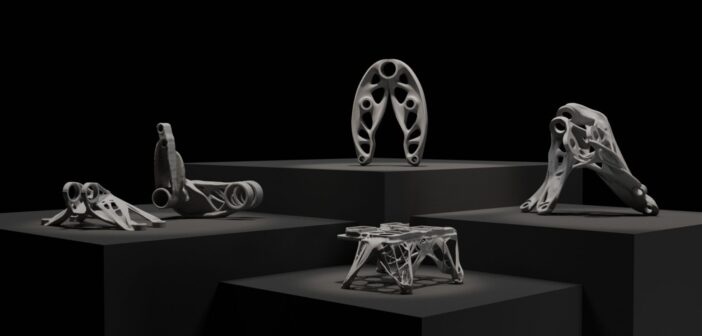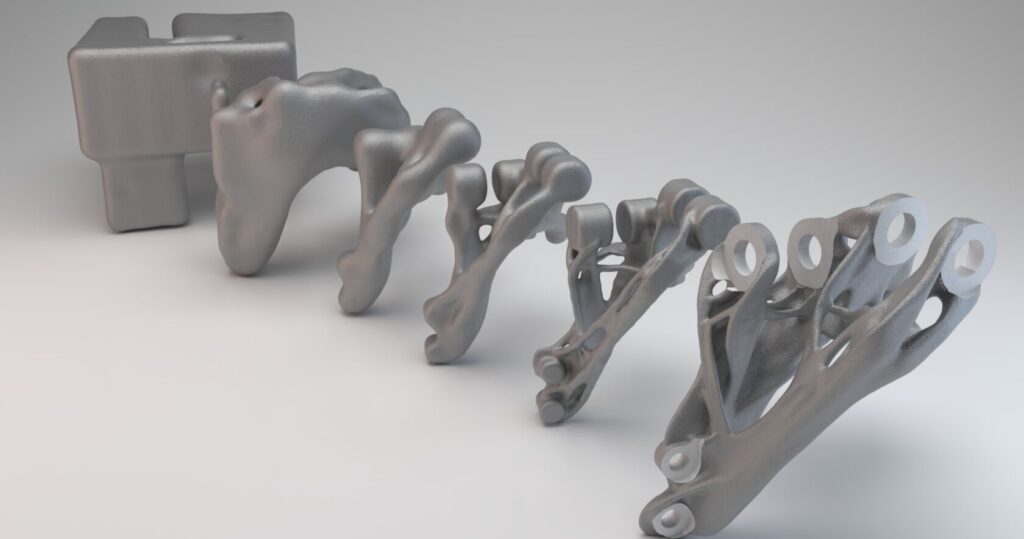is How do you create a new product that redefines your organisation? How do you design products that redefine a genre? What is generative design? And how can we harness it to elevate the human experience?
Typically the design approach is based on reasoning and logic, from idea generation through research and concept development to testing and validation.
Here’s the problem. Even the world’s best product designers are limited by their own experience and their knowledge. Like it or not, human beings are biased. We have pre-determined ideas of what objects should look like and how they should function, from everyday things like bicycles to technical components such as an automotive gearbox. These absorbed conventions are deeply, subconsciously held. It is impossible for any human being to approach a design task without these parameters in mind.
The generative approach to product design
Imagine the following situation (bear with me on this). A boy lives in a small town with a river running through it. Every weekend he goes to feed the swans with his dad. The swans are big, beautiful birds, brilliant white and graceful in the water. The boy grows up and moves to another part of the country. He’s grown accustomed to feeding the swans. It reminds him of home, although the river is different, the swans look the same.
If a swan comes on the television, it’s always white. Every picture of a swan shows a bright white bird. Without any more information, that boy would logically and justifiably spend his whole life thinking that all swans were white. This is called inductive reasoning. It’s when you make general conclusions based on specific observations.
This is the most common type of reasoning we use in everyday life, and it’s not perfect. It’s limited by the level of experience you have. Some swans are black.
It would be wrong to say that we are blinded by inductive reasoning. It gives us the fundamental tools to operate in the world but it is not perfect, especially in terms of creativity. We are restricted by our own experience, by legacy designs and by our own imagination. The study of reasoning in design is a fascinating topic, and one that is well worth exploring. For more information there is an excellent study conducted by researchers at the University of Denmark freely available online here.
Generative design: A new avenue for innovation
Generative design automates the design process. The engineer simply inputs the specific requirements, constraints and objectives and the AI gets to work creating designs that meet the objective. Without any kind of societal experience or learned bias, the AI creates designs that no person could ever have thought possible. Simply by creating a design to sit within technical parameters, it can revolutionise the entire look and performance of everyday products. It frees designers from repetitive tasks and it adds to their creative repertoire, often providing entire new creative avenues to explore and allowing them to focus on creatively driving innovation with new product concepts.
Each manufacturer has different capabilities, different machines, different resources available. Generative algorithms optimise designs for each manufacturing ecosystem by taking these factors into account. For instance, we can create designs tailored for additive manufacturing, which generate significant material and energy savings making design a key enabler for efficiency and sustainability.
The ability to create designs that are ready for 3D printing without manual editing is something that sets Hexagon’s technology apart. High automation brings efficiency, speed and rapid iteration. By minimising the time and effort needed for optimisation, generative design empowers makers to explore various design possibilities. In theory, it can create an unlimited number of variants. Engineers can select the most promising version from up to ten options.
Another important capability is component consolidation. Rather than building multiple parts that need assembling, the generative approach creates single, consolidated components. The potential benefits of that are enormous. It saves time in production and assembly, and because there are fewer parts and there are fewer things to go wrong. Consolidation reduces the number of individual components and therefore there are fewer failure points and better structural integrity.
Traditional product design vs generative design
| Feature | Traditional | Generative |
| Design approach | Manual | Algorithmic |
| Input parameters | Defined by designer | Defined by goals and constraints |
| Number of iterations | Limited by time and resources | Potentially infinite |
| Optimisation | Designer’s education & experience | Optimisation algorithms (similar to the principles of nature) |
| Complexity handling | Limited | Advanced algorithms handle complex geometries |
| Time efficiency | Time consuming | Faster process due to automation |
| Innovation | Heavily influenced by designer’s experience, knowledge and creativity | Generates unique and innovative designs without bias |
Generative design offers a revolutionary approach to product development. It empowers engineers to break free from their own biases and unleash their creativity to drive innovationby leveraging the power of advanced algorithms and AI.
It is a huge advantage to create designs that are ready for 3D printing without manual editing. Additionally, the potential for component consolidation bring significant benefits, such as time savings, enhanced performance and improved structural integrity. This new technology is transforming the way we create products, unlocking new possibilities and redefining what is possible.
Computational design is a game-changer in design and manufacturing. It helps create smart and efficient product designs by evaluating countless iterations. It also gives us a way to improve functionality with less material and weight. This saves money, energy, and helps protect the environment.
Generative design helps manufacturers iterate designs faster than ever. It makes the process of creating products faster while improving design quality and reducing mistakes. Generative design empowers manufacturers to create products that are smarter, lighter, and more sustainable. It offers new ideas that make manufacturing smarter and more efficient.
For more information about generative design, visit the solution pages on our website.















